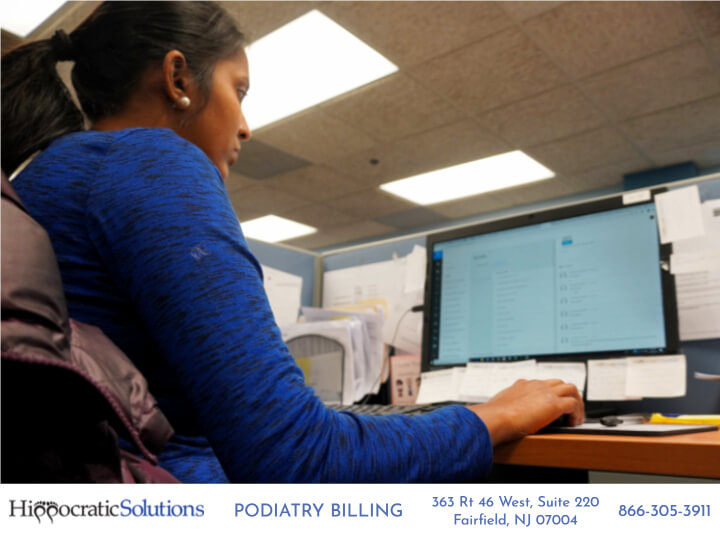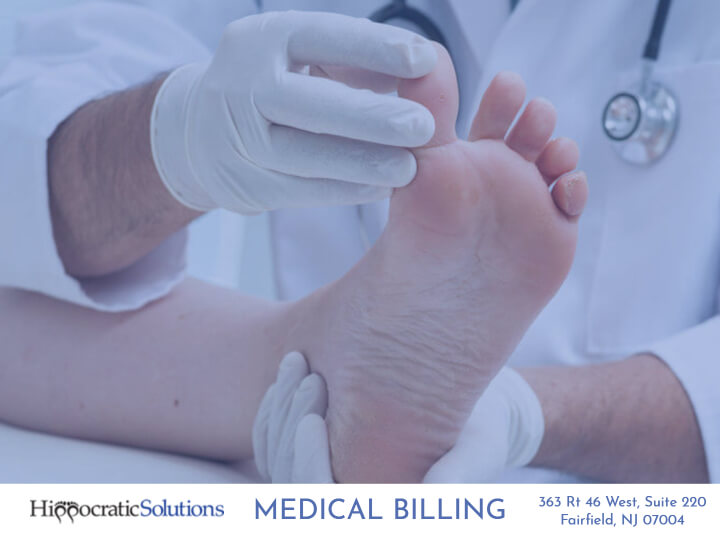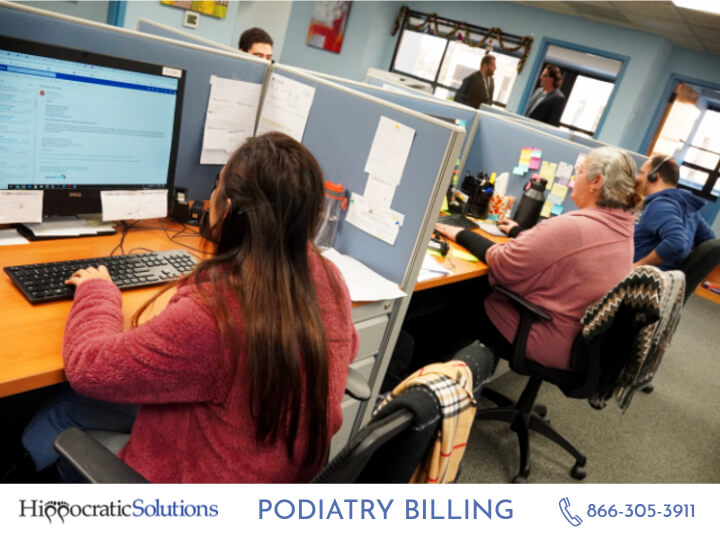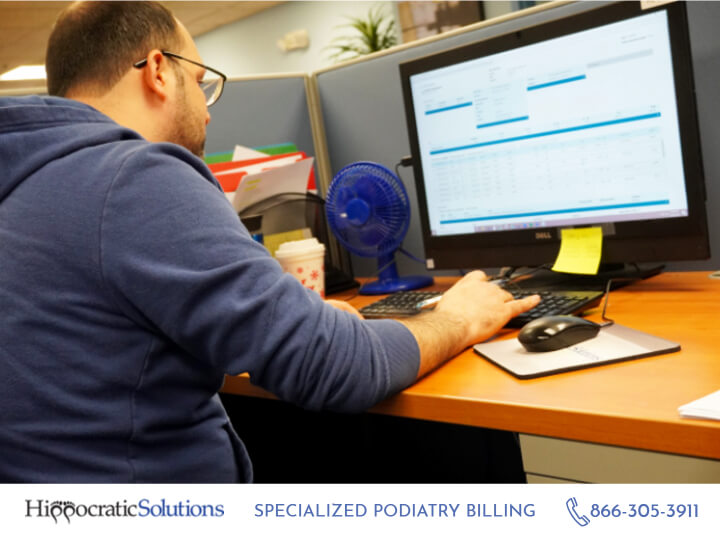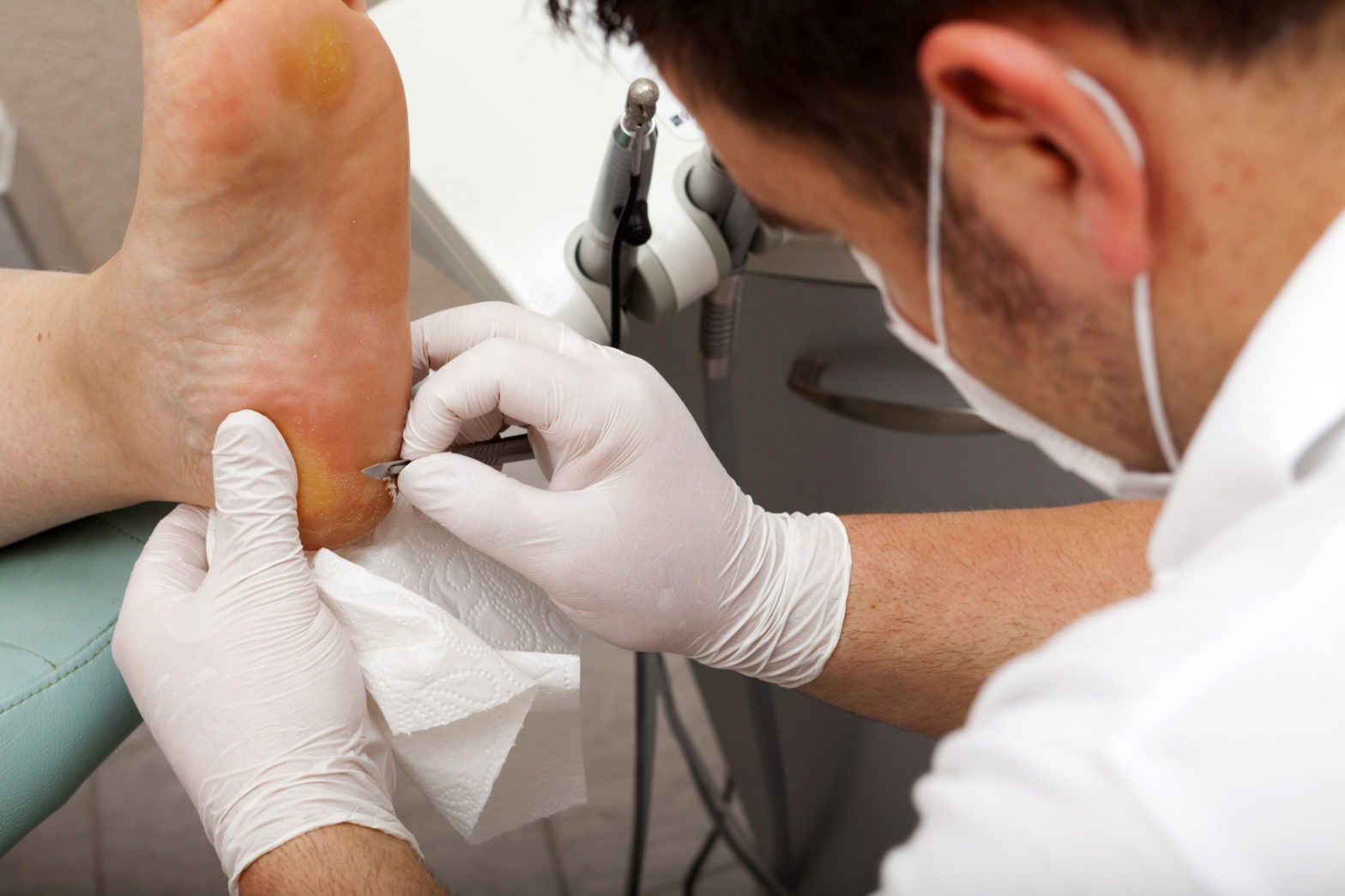Medical billing is rife with nuances, and proper modifiers can help distinguish one patients’ case from another. Modifiers determined by the Center for Medicare and Medicaid Services (CMS) act as a system that distinguishes different types of cases, and whether or not they are covered by Medicare. One such modifier is the GY modifier used in medical billing, including podiatry billing.
So, what is GY modifier and what does it mean? The GY modifier is used in medical billing to indicate that the service is statutorily excluded by Medicare. In this article, we explain the difference between GA, GY, GZ modifiers, and how to use it properly in podiatry coding.
Understanding Billing Modifiers
Billing modifiers provide information to the payer, whether it’s the patient using out-of-pocket expenses or the health insurance company providing support. A billing modifier is used to clarify how a service is being processed and billed differently from standard procedure.
For instance, a modifier is used to clarify which of the tests in a bundled code were not performed. In this case, we are talking about the modifiers that identify how items and services that are statutorily excluded or do not meet any definition of Medicare policies and codes are specifically handled.
What Are G Modifiers?
G modifiers are a specific set of modifiers used to indicate that a service or item is not covered by Medicare. The most common modifiers include GA, GX, GY, and GZ.
Here’s how they differ from each other:
GA Modifier: Waiver of Liability Statement Issued As Required by Payer Policy.
The GA modifier is used when you report a mandatory advance beneficiary notice of noncoverage (ABN) for an item or service. This means the patient knows the item or service doesn’t meet the definition of any Medicare or Medicaid policies, and will therefore not be covered.
In other words, the GA modifier is used when physicians want to indicate that they expect Medicare to deny a claim as not reasonable or necessary. While billers don’t have to submit a copy of the ABN, a file must be kept on-hand for easy access and verification.
GZ Modifier: Notice of Liability Not Issued, Not Required Under Payer Policy
The GZ modifier is used when doctors want to specify that they expect Medicare to deny an item or service as unreasonable or not necessary. Compared to the GA modifier, this is used to note that they don’t have an ABN signed by the beneficiary.
GX Modifier: Notice of Liability Issued, Voluntary Under Payer Policy
The GX modifier is used if an item or service is statutorily excluded or is not a Medicare benefit. The GX modifier is used instead of the GY modifier if an ABN is provided.
GY Modifier: How Is It Different?
The GY modifier is similar to the GZ modifier in that it is used to specify that the supply or service is not supported by any definition of Medicare accepted policies. The difference between the GY and the GZ modifier is the issuing of an ABN.
The GY modifier helps with auto-denial claims and is typically used when a patient has secondary insurance that can cover the service. Note that the issuance of an ABN is not required to use the GY modifier; the bill may be submitted even if a voluntary ABN was not signed by the beneficiary.
What does “statutorily excluded” mean?
Medicare benefit only applies to items or services that are legally defined as essential services. Certain services and items, such as hearing aids, corrective dental items like braces, and temporary prosthetic devices, do not meet the definition of services and goods included in the Medicare benefit.
Podiatry Services: What Is Covered and What Isn’t
What podiatry services aren’t covered by Medicare?
As a rule of thumb, routine foot care and grooming services are not considered to be part of the Medicare benefit. Listed below are some podiatry services not covered by Medicare and Medicaid services:
1) Flat foot treatment
Services, including diagnosis and physical therapy, as well as corrective devices used towards the care of flat foot is not included in the definition of any Medicare covered service.
2) Routine foot care
Routine foot care visits that are considered grooming and not surgical or corrective in nature are not covered by Medicare. This includes the removal and treatment of corns and calluses, as well as the cutting, clipping, and debriding of nails.
Hygienic care and preventative maintenance also do not meet the definition of essential care, and are thus not considered medical services. Cases involving ingrown nails are evaluated individually; if a podiatrist determines toenail clipping as hazardous without the help of a medical professional, it might be covered by Medicare.
Patients with diabetic sensory neuropathy experiencing loss of protective sensation (LOPS) may be able to redeem Medicare benefits provided that the patient has a documented diagnosis of diabetic sensory neuropathy, as well as LOPS. The policy covers treatment and examination no more than once every six months, given that the patient has not seen a podiatrist for any other reason within this time period.
Other such exemptions concerning foot care are determined on a case-by-case basis. For instance, the treatment of mycotic nails is covered under certain specifications.
Mycotic nail treatment for ambulatory patients and non-ambulatory patients without a systemic condition are covered as long as the podiatrist provides clinical evidence of toenail mycosis and that the patient has declared limited mobility, pain, or a secondary infection due to the condition.
3) Orthopedic Devices
Corrective and supportive devices including but not limited to orthopedic shoes are typically not covered, unless it is a part of a leg brace and its cost is lumped in with the total cost of the leg brace. This includes orthopedic devices prescribed for diabetic patients; too many patients falsely believe that they are entitled to free footwear because of diabetes.
4) Preventative Maintenance
Only essential services are covered by Medicare services, which means podiatry services that are preventative in nature will not be covered.
What podiatry services are covered by Medicare?
Alternatively, certain podiatry services and items that are deemed reasonable and necessary can be covered by Medicare. This typically includes chronic ailments including bunion deformities. Conditions like heel or toe spurs can also be covered by Medicare.
Other diseases and deformities that are eligible for Medicare coverage include:
- Hammertoes
- Plantar Fasciitis
- Stress Fractures
- Peripheral Neuropathy
- Morton’s Neuroma
Podiatry patients should be aware that Medicare part B pays 80% of the Medicare-approved amount for covered foot care. They only pay 20% of the bill including the annual deductible. Clinics must clarify payment details to patients to avoid surprise bills in the future.
Communicating With Patients Regarding Non-Covered Services and Items
Educating patients is the first step to avoiding tension and confusion when their bill finally arrives. This is especially true for elderly and diabetic patients who have routine foot care as part of their regular care.
An easy way to educate patients is by providing this information upfront during their initial exam. Explaining why their item or service doesn’t meet the definition will give the patient a more concrete understanding of the situation. We suggest following up with an advance beneficiary notice if the patient agrees to move forward with the foot care, as proof that the patient understands that their service or product isn’t deemed necessary or essential, and thus will not be covered by Medicare.
In our experience, patients have difficulty adjusting to information especially if their old podiatrist clinic was unclear. At Hippocratic Solutions, our billing experts will patiently explain these and clarify any issues with your patients, both old and new.
Other ways to educate patients include creating useful content they can read online, asking them to sign an ABN, and providing posters around the clinic for easy access.
Why Work With Hippocratic Solutions
Hippocratic Solutions is a specialized podiatry billing company. Our billings and coders are well-versed in podiatry-specific billing codes, which greatly enhances our efficiency by reducing human error. Our team regularly keeps up with the codes, modifiers, and other podiatry-specific billing policies established by the Center for Medicare and Medicaid Services (CMS). This means our team is up-to-date with new policies surrounding all things podiatry billing.
On top of that, our billers aim to represent your clinic in the best way possible. When we encounter patients with issues, we rectify problems amicably and provide compassionate but straightforward reasoning behind denied claims.
As a result, your podiatry clinic has reliable cash flow and an even better reputation with your patients.
